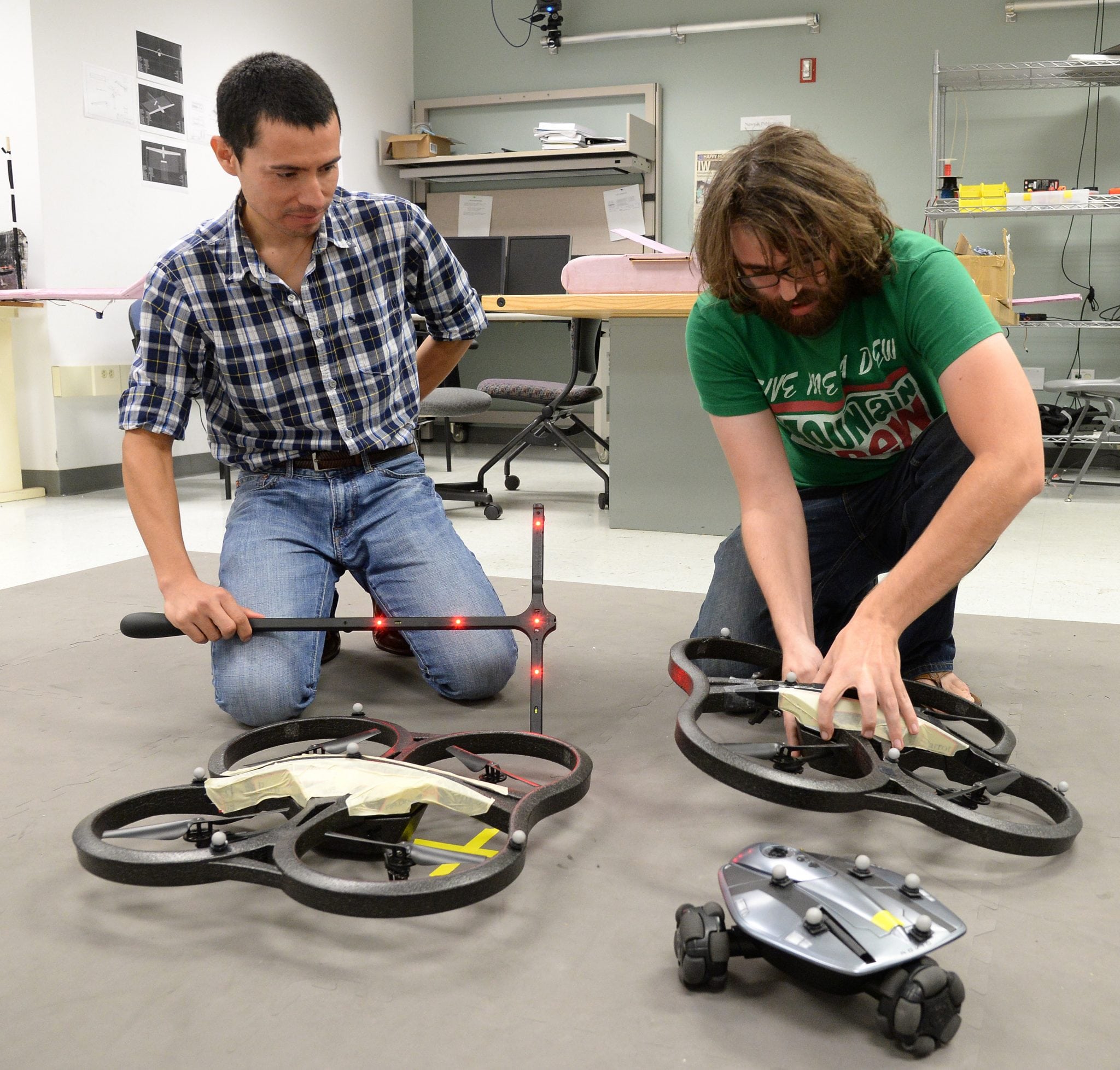 |
| Luis Garcia Carrillo works with a student to test unmanned aerial vehicles capable of vertical flight. Photo: tamucc (flickr) |
[Avionics Today 11-12-2014] Students at Texas A&M University are currently developing an Unmanned Aircraft System (UAS) that promises to turn the industry on its side. The multi-rotorcraft, which is still in the development stages, can fly both vertically and horizontally, making it ideal for search and rescue scenarios.
Unlike conventional small UAS rotorcrafts with four helicopter-like rotors that fly in a horizontal mode, the proposed platform with eight rotors will be able to rotate its body into a vertical flying mode. The aircraft, which will only weigh about 4.5 pounds, is being designed with search and rescue scenarios in mind and, in theory, can be sent through a narrow window of a burning building looking for victims or hazards to fire fighters.
“This aircraft could be used for search and rescue in environments considered to be too complicated to access by means of conventional UAS,” said Dr. Luis Rodolfo Garcia Carrillo, assistant professor of engineering and director of the university’s Unmanned Systems Laboratory, who is collaborating with a group of undergraduate researchers to have a functional prototype by May 2015.